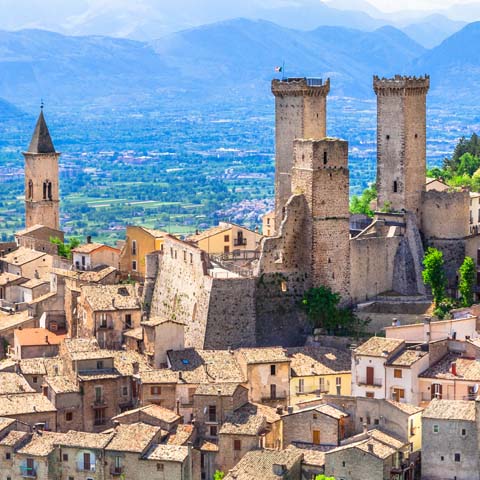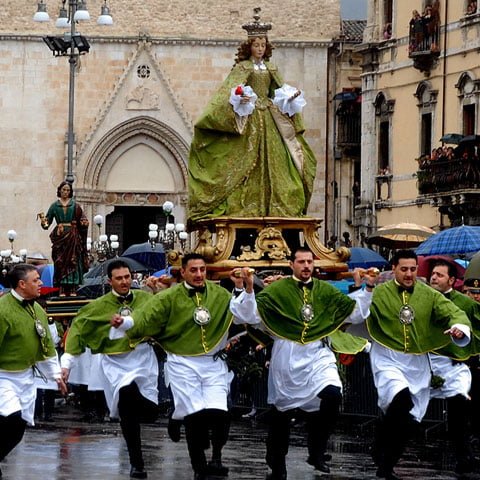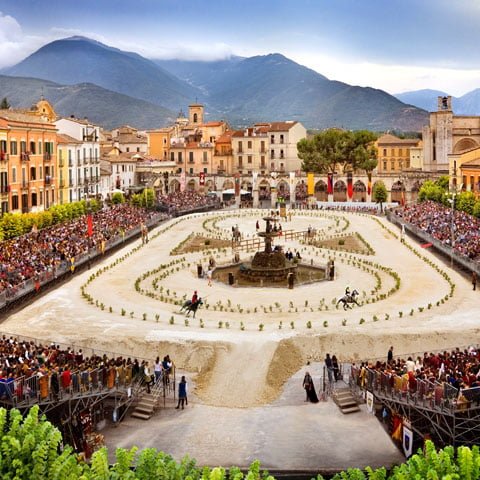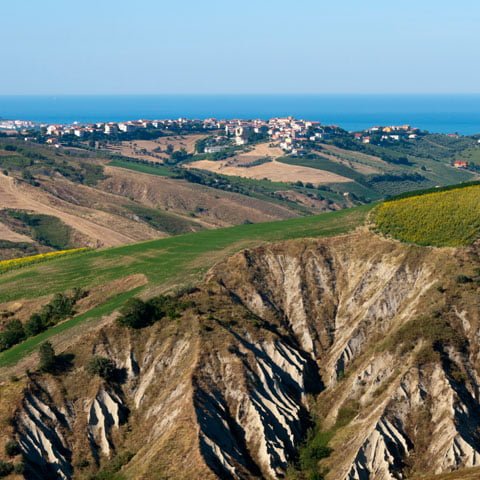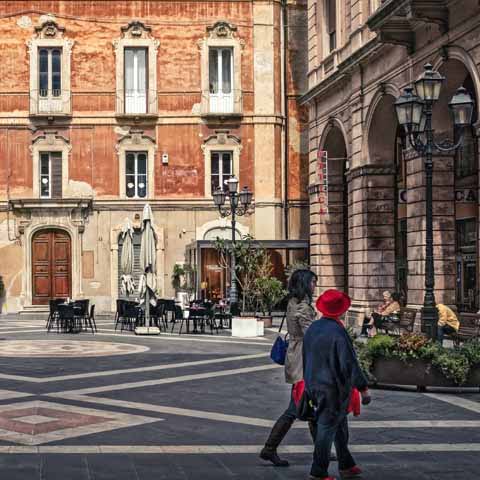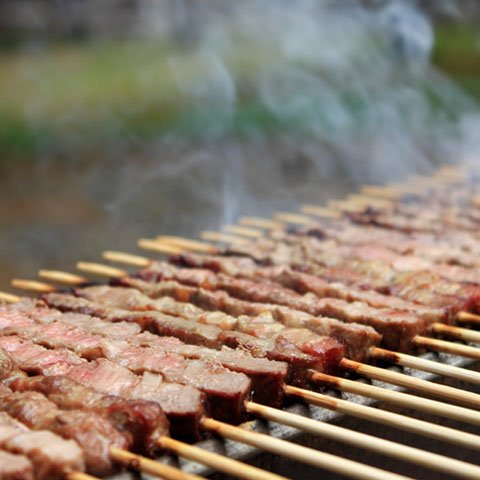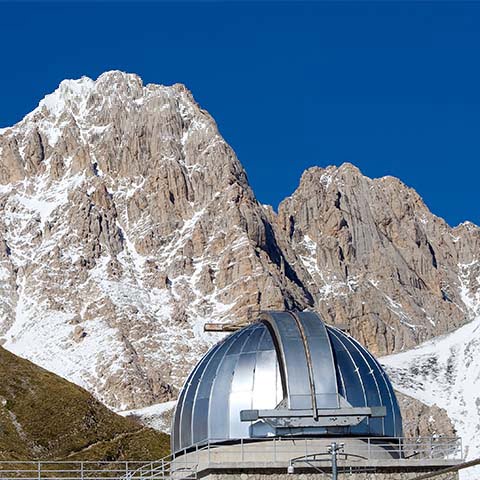Abruzzo – Travel Guide
The region of Abruzzo, Italy is truly a land of treasures, with something for everyone. The majestic mountains attract hikers, skiers, and snowboarders alike in the west, while the coast of the Adriatic Sea offers a slice of the beach life with pristine sand and crystal blue water in the east. The quiet, winding roads of Abruzzo entice visitors to experience solitude and peace in an introspective journey to find themselves amongst the hidden jewels tucked into virtually every corner of the region. Whether it’s feeling the wind in your hair as you scale the rocks and climb to impressive castle remains, bicycling the winding roads of beautifully preserved medieval villages, or catching rays near the tranquil waters of the sea, you are witnessing the incomparable beauty of Abruzzo.
With only 1.2 million inhabitants spread out over an area of four thousand square miles, the region of Abruzzo can feel somewhat isolated at times, which is a wonderful reprieve for travelers wanting to experience all Italy has to offer without the crowds. Add to that the miles and miles of national parks and reserves that earn Abruzzo the title of being one of the greenest areas of Europe, and it can feel like the splendor of the region is there just for your taking.
In Abruzzo, art and architecture go hand in hand. Many early inhabitants of the land were skilled at stone and wood carving and gilding, which created the unique structure and grandeur of the castles, cathedrals, and fortresses still standing today. For many of these landmarks, the true beauty lies within and is utterly a work of art. Two such landmarks that are a must-see for art lovers include the Basilica of San Bernardino (reopened in 2015 after the earthquake of 2009) in the city of L’Aquila and the Teramo Cathedral in the city of Teramo.
Abruzzo’s earliest recorded inhabitants were nomadic hunters and harvesters from almost five thousand years ago. Since that time, Abruzzo continued to grow under Roman, Byzantine, Norman, Spanish, and Bourbon influences, with each leaving its mark on this region’s distinct culture. While many locations in Italy became a product of other international influences in more modern times, Abruzzo remained largely untouched due to the remoteness of the mountainous region. For this reason, the region is largely traditional in culinary and architectural customs to this day.
GEOGRAPHY & CLIMATE
Abruzzo is made up of four provinces: L’Aquila, Teramo, Pescara, and Chieti. The region is east of Rome and is diverse in landscaping with the Apennine Mountains that stretch all the way to the Adriatic Sea, coastal sandy beaches in the north and pebbly beaches in the south, and hilltop medieval villages and national parks in between. The region is sprinkled with vineyards responsible for producing the highly popular Montepulciano d’Abruzzo wine and olive groves that are considered to produce some of the finest extra virgin olive oils in Italy.
With part of Abruzzo bordering the Adriatic Sea, there are four main ports: Pescara, Ortona, Vasto, and Giulianova. In addition to outstanding fishing, Abruzzo ports, coast, and regional waterways offer sailing, canoeing, fishing, and even windsurfing for the truly adventurous!
When traveling away from the coast and into the medieval hilltop villages and mountains, the region is best explored by car, and in some cases, by foot in extremely remote areas. There are three main highways. Highway A24 has the longest road tunnel entirely on Italian territory and can connect visitors from Rome with the Abruzzo coast in approximately two hours. Highway A25 connects Rome to the city of Pescara. Highway A14, also known as the A14 Adriatica, winds through coastal towns and tourist hotspots.
While there are a couple of smaller airports, the popular Abruzzo International Airport facilitates international travel by connecting visitors in Pescara with many other European cities.
The climate in Abruzzo is largely controlled by the Apennine Mountains as they seemingly divide the region’s weather. November tends to be universally the rainiest month for both the mountains and coast, though that is where the similarities end.
The mountains are often cool and dry with temperatures averaging close to 50 degrees, but can climb to just under 70 degrees during the day in the summer. The highest mountain elevations get snowfall, with fabulous skiing opportunities and beautiful scenery at a lower price than other Italian counterparts.
The weather on the coast is quite different. Beach-goers can expect temperatures close to 80 degrees in the heat of summer, although it is generally closer to 60 degrees during the remainder of the year. Regardless of the temperature along the coast there is an abundance of things to do here, with plenty of popular attractions.
WHEN IN ABRUZZO
Whether you are traveling by boat, car, bus, or foot, the region of Abruzzo offers something unique for each mode of transportation.
Abruzzo is considered the greenest area in Europe with more than one-third of the region dedicated to various national parks and reserves. These areas are best traveled by automobile or foot and offer unique sightings of the various animals of Europe. In fact, these parks and reserves protect three-quarters of Europe’s living animal species. Abruzzo National Park, Gran Sasso and Monti della Laga National Park, Majella National Park, and Sirente-Velino Regional Park offer plenty of beauty and wonders of nature.
The Trabocchi Coast is a beautiful stretch of the shore that features ancient fishing machines called trabocchi. These fishing structures were developed by early fishermen who wanted to develop a fishing technique that was not subject to weather or sea conditions. The trabocchi use a set of ropes and pulleys to hoist nets in and out of the water to catch assorted fish such as sardines, sea bass, and anchovies. Many trabocchi located along the Abruzzo and Molise coasts are still operational to this day, with some being powered by electricity.
The hilly and mountainous areas of Abruzzo are home to historical cathedrals, castles, and medieval villages. While some of these landmarks are not easily reached by main roads, they are well worth the trek. Abruzzo’s historic art is deeply rooted in craftsmanship, which is gloriously on display inside local structures.
Although somewhat isolated compared to other Italian destinations, make no mistake that Abruzzo is a land of diversity with majestic mountains, blissful shorelines, and stunning architecture that will simply steal your heart.
